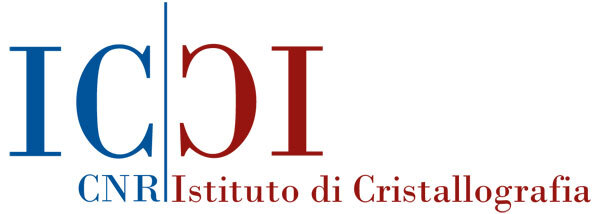Exploring the multiscale complexity of natural and engineered biotissues
At the XMIlab[1], the X ray micro imaging laboratory of the CNR – Institute of Crystallography of Bari, Wide (WAXS) and Small (SAXS) Angle X ray Scattering techniques are employed for the exploration of biological tissues at both atomic and nanoscale. X-ray diffraction techniques have demonstrated to be a useful tool in biomedical field for the structural characterization of biological tissues. For example, their crucial application in the early stage biomineralization steps allowed to determine the growth of one of the fundamental biocrystal of the body, hydroxyapatite, from the chemical fingerprint of the nucleation of the hexagonal structure[2], or the hierarchical analysis of fibers.[3]
In the field of regenerative medicine, the main fibril-forming protein of the mammalian extracellular matrix (ECM) is type I collagen, that provides mechanical support to tissues and organs in a tissue-specific manner. From the molecular as well as, supramolecular scale, it is organized in triple helices assembled in fibrils and fibers, in accordance with a liquid crystalline arrangement at nanoscale. Thanks to its hierarchical structure and functional domains, collagen supplies physical support to cells attachment and growth, influencing tissue development. In physiologic conditions type I collagen biocompatibility, bioactivity and biodegradability make it attractive as biomaterial for implantable medical devices. Indeed, it can be extracted from different collagen-rich tissues of distinct animal species by chemical and/or enzymatic processes, leading to structural alteration of the fibrillary arrangement. The ubiquitous distribution of type I collagen makes it also a marker of pathologic alteration. For instance, in diabetic condition, collagen represents the main target of glycation, no reversible sugars addiction to the protein, that leads to ECM disfunction. Moreover, its alteration can lead to microcalcified site in cardiovascular pathologies such as aortic aneurisms[4,5].
In this seminar the role of WAXS and SAXS techniques, for the evaluation of sub and supramolecular features of collagen in pathologic conditions with respect to physiologic ones, will be explained. Moreover, the biomaterial fabrication steps, starting from fresh collagen-rich tissues to the final scaffolds, will be described, discussing how X-rays techniques have revealed how manufacturing protocols deeply affect the features of the biomaterial itself, becoming fundamental tools to screen the suitable protocols, according to the tissue to regenerate[6,7].
References
- D. Altamura, R. Lassandro, F.A. Vittoria, L. De Caro, D. Siliqi, M. Ladisa, C. Giannini, J.Appl. Cryst., 2012, 45, 869–87
- Procopio A, Malucelli E, Pacureanu A, Cappadone C, Farruggia G, Sargenti A, Castiglioni S, Altamura D, Sorrentino A, Giannini C, Pereiro E, Cloetens P, Maier JAM, Iotti S. Chemical Fingerprint of Zn-Hydroxyapatite in the Early Stages of Osteogenic Differentiation. ACS Cent Sci., 2019, 5(8):1449-1460.
- Sibillano, T.; Terzi, A.; De Caro, L.; Ladisa, M.; Altamura, D.; Moliterni, A.; Lassandro, R.; Scattarella, F.; Siliqi, D.; Giannini, C. Wide Angle X-Ray Scattering to Study the Atomic Structure of Polymeric Fibers. Crystals 2020, 10, 274
- Giannini, C., De Caro, L., Terzi, A., Fusaro, L., Altamura, D., Diaz, A., Lassandro, R., Boccafoschi, F. & Bunk, O., . IUCrJ, 2021, 8, 621-632.
- Giannini, C., Ladisa, M., Lutz-Bueno, V., Terzi, A., Ramella, M., Fusaro, L., Altamura, D., Siliqi, D., Sibillano, T., Diaz, A., Boccafoschi, F. & Bunk, O., IUCrJ, 2019, 6, 267-276.
- A. Terzi, E. Storelli, S. Bettini, T. Sibillano, D. Altamura, L. Salvatore, M. Madaghiele, A. Romano, D. Siliqi, M. Ladisa, L. De Caro, A. Quattrini, L. Valli, A. Sannino, C., Giannini, Sci Rep., 2018, 8, 1, 1429
- A. Terzi, N. Gallo, S. Bettini, T. Sibillano, D. Altamura, L. Campa, M.L. Natali, L. Salvatore, M. Madaghiele, L. De Caro, L. Valli, A. Sannino, C. Giannini, Front Bioeng Biotechnol., 2019, 7, 203


